Key Takeaways: The Prop Trading Landscape
- Profit-sharing ratios have increased across top prop firms, with 90% becoming the new competitive standard
- Evaluation models have evolved to focus on consistent risk management rather than aggressive profit targets
- Multi-asset trading capabilities are now essential, with the best firms offering seamless access to forex, futures, stocks, and cryptocurrencies
- Mobile trading support has become a critical differentiator, with traders demanding robust platform experiences across all devices
- Funded Trading Plus leads the instant funding segment with innovative risk assessment technology that eliminates traditional evaluation phases

“How to Join Online Prop Trading Firms …” from luxtradingfirm.com and used with no modifications.
The proprietary trading landscape has transformed dramatically heading into 2026. Gone are the days when prop firms could attract traders with impossible challenges designed to collect evaluation fees. Today’s top performers have adapted to trader demands for transparency, fair evaluation metrics, and competitive profit splits that truly reward skill. With more options than ever before, selecting the right prop trading firm requires careful consideration of your trading style, capital requirements, and long-term objectives.
For traders seeking funded accounts, 2026 represents a golden era of opportunity. The industry has matured significantly, with established players refining their offerings while innovative newcomers disrupt traditional models. Market volatility across multiple asset classes has created favorable conditions for disciplined traders, and the best prop firms have responded by providing more capital, better terms, and cutting-edge technology to support various trading methodologies.
The 10 Best Prop Trading Firms of 2026
After analyzing hundreds of proprietary trading firms based on evaluation fairness, capital allocation, profit splits, platform stability, and trader satisfaction, we’ve identified the definitive ranking of prop trading firms for 2026. Each firm offers unique advantages for different trading styles, but all have demonstrated commitment to trader success through verifiable payouts and transparent business practices. Our comprehensive assessment considered both quantitative metrics and qualitative feedback from thousands of funded traders worldwide.
1. FTMO: Still the Industry Standard
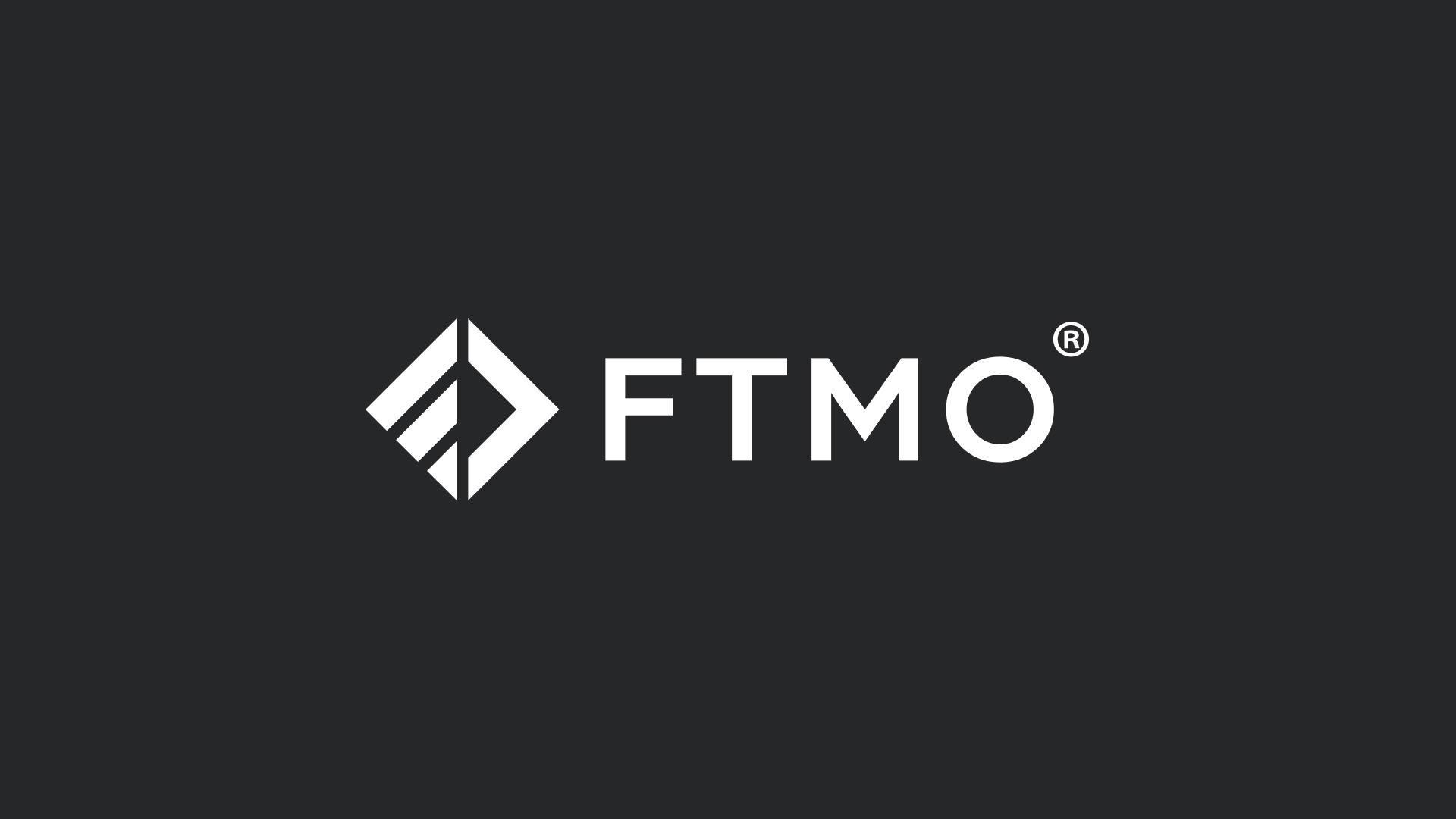
“FTMO Review – Forex Prop Reviews” from forexpropreviews.com and used with no modifications.
FTMO continues to set the benchmark for proprietary trading firms, maintaining its position through constant innovation and trader-focused improvements. Their two-phase evaluation model has been streamlined to better identify truly skilled traders while filtering out those who simply get lucky. With account sizes now ranging from $10,000 to an impressive $400,000, FTMO offers scaling opportunities that few competitors can match. Their newly implemented AI-driven performance analytics provide traders with unprecedented insights into their decision-making patterns.
What truly distinguishes FTMO is their industry-leading 90% profit split for all funded traders—a significant improvement over their previous 80% model. Their proprietary platform compatibility has expanded to include direct integration with TradingView, MetaTrader 5, and cTrader, catering to diverse trader preferences. The introduction of their weekend cryptocurrency trading option has also attracted a new segment of traders looking to capitalize on 24/7 market opportunities.
2. The Funded Trader: Best for Scaling Opportunities
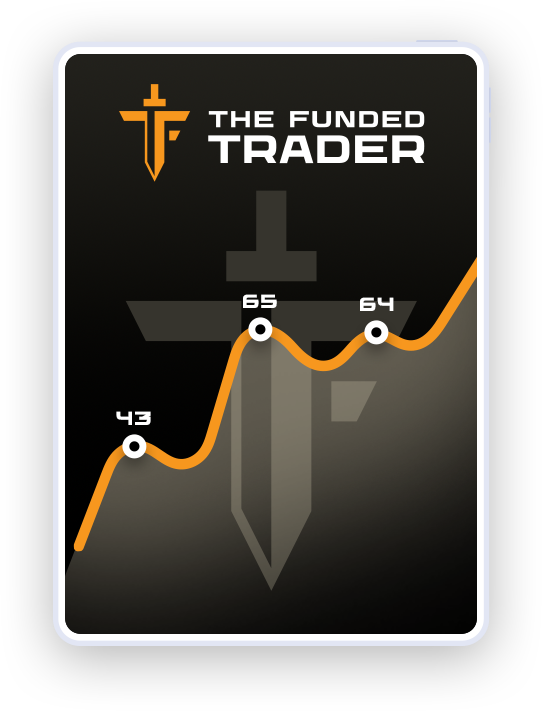
“The Funded Trader” from thefundedtraderprogram.com and used with no modifications.
The Funded Trader has revolutionized the scaling model in proprietary trading. Their innovative approach allows successful traders to manage multiple funded accounts simultaneously after proving consistent profitability. This multi-account management feature has become particularly valuable for traders who have developed systems that work across different market conditions and asset classes. Their proprietary risk management suite provides real-time feedback that helps traders optimize position sizing and exposure.
If you’re interested in exploring similar opportunities, check out the best investment strategies and tips for crypto and forex trading.
Most impressive is The Funded Trader’s accelerated growth path, enabling traders to scale from $25,000 to $1 million in managed capital within just six months of consistent performance. Their profit-sharing structure increases progressively with account size, reaching up to 95% for their highest-tier traders. The platform’s newly implemented social trading component allows funded traders to build followings and earn additional income through their proprietary signal marketplace.
- Three-tier scaling program with clear performance metrics
- Custom drawdown parameters based on trading style assessment
- Weekly profit withdrawals with no minimum thresholds
- Expanded asset coverage including options on futures
- Advanced algorithm performance tracking for systematic traders
3. TopstepTrader: Top Choice for Futures Traders
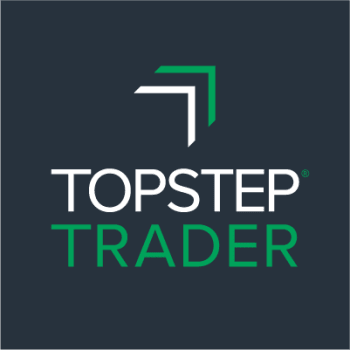
“Topstep is a 2023 Inc. 5000 honoree” from www.inc.com and used with no modifications.
TopstepTrader has maintained its dominant position in the futures trading niche by doubling down on what they do best: providing elite-level futures trading infrastructure with unmatched execution quality. Their specialized focus allows them to offer the lowest possible commissions and exchange fees, giving funded traders a significant edge in high-frequency trading strategies. The firm’s partnership with major liquidity providers ensures fill quality that retail traders simply cannot access elsewhere.
TopstepTrader has expanded their product offerings to include micro futures and options on futures, catering to a wider range of trading approaches. Their redesigned Combine evaluation now features adaptive targets that adjust based on market volatility, eliminating the disadvantage traders previously faced during low-volatility periods. With daily coaching sessions and institutional-grade market analysis available to all funded traders, TopstepTrader provides a comprehensive ecosystem for futures specialists looking to grow their careers.
For those interested in diversifying their trading strategies, exploring crypto vs forex trading could offer additional opportunities.
4. E8 Funding: Most Flexible Trading Conditions

“E8 Funding Overview: Features, Pricing …” from www.benzinga.com and used with no modifications.
E8 Funding has emerged as the flexibility champion among prop firms. While competitors typically impose strict trading rules and limitations, E8 has pioneered an adaptive framework that accommodates diverse trading styles. Their proprietary risk assessment algorithm evaluates each trader’s methodology and creates customized parameters that align with their unique approach. This personalization extends to holding periods, allowing everything from scalping to multi-day position trades under the same account structure.
The firm’s standout feature is their “trade your way” philosophy, which has attracted traders who previously felt constrained by conventional prop firm rules. Their custom dashboards provide real-time feedback on risk utilization rather than imposing rigid stop-loss requirements. With trading permitted across all sessions and news events, E8 Funding trusts traders to manage their own risk profiles while providing guardrails rather than restrictions. Their rapid verification system also delivers funding decisions within 12 hours of challenge completion—significantly faster than industry averages.
5. City Traders Imperium: Best for Long-Term Trading
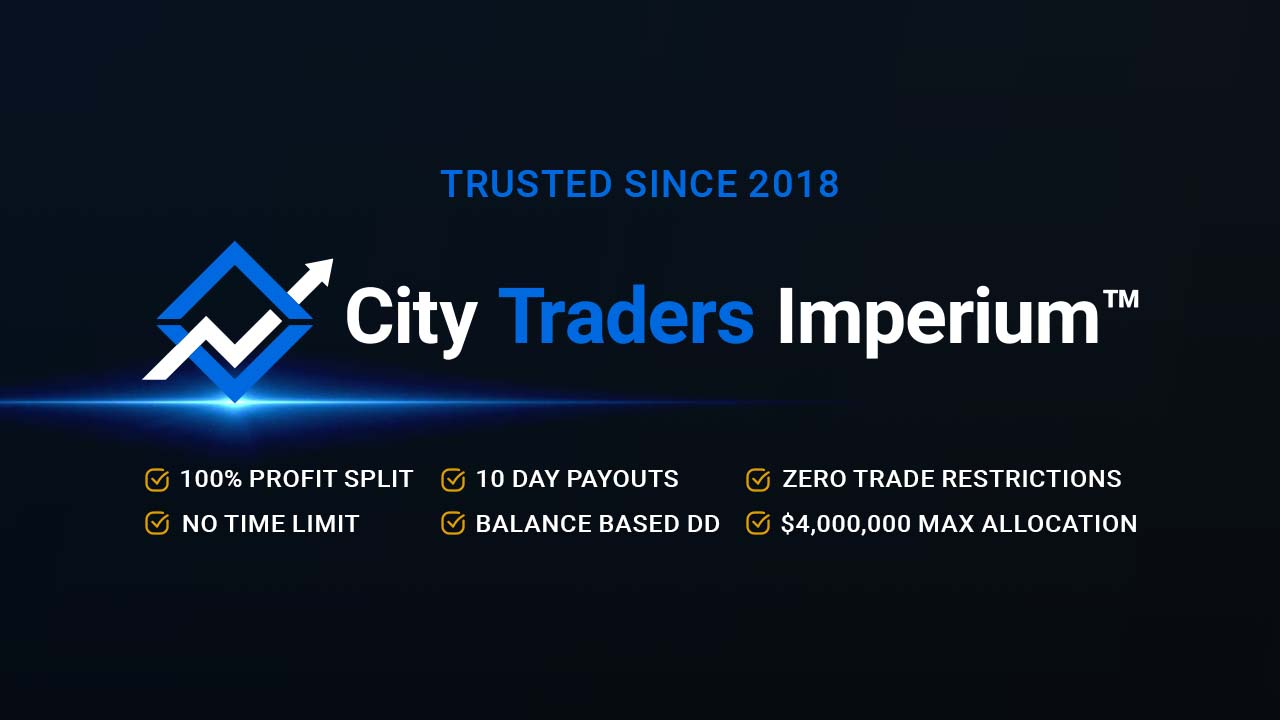
“The Leading Prop Firm Funding Traders …” from citytradersimperium.com and used with no modifications.
City Traders Imperium has carved out a distinctive niche as the premier prop firm for position traders and swing traders. While most competitors still prioritize short-term trading approaches, CTI has embraced longer timeframes with evaluation models specifically designed for multi-day and multi-week holding periods. Their innovative “Momentum Trader Program” allows for positions to be held through weekends and major news events, with drawdown calculations adjusted for the inherent volatility of longer-term strategies.
What truly sets CTI apart is their structured approach to trader development. Every funded trader receives access to their institutional research department, with daily analysis of macroeconomic trends and intermarket relationships. Their extended evaluation periods—now up to 180 days—give traders ample time to demonstrate edge across varying market conditions without the pressure of arbitrary time constraints. For traders focused on fundamental analysis and larger market moves, CTI offers unmatched freedom to execute their strategies with appropriate time horizons.
6. SurgeTrader: Fastest Path to Funding
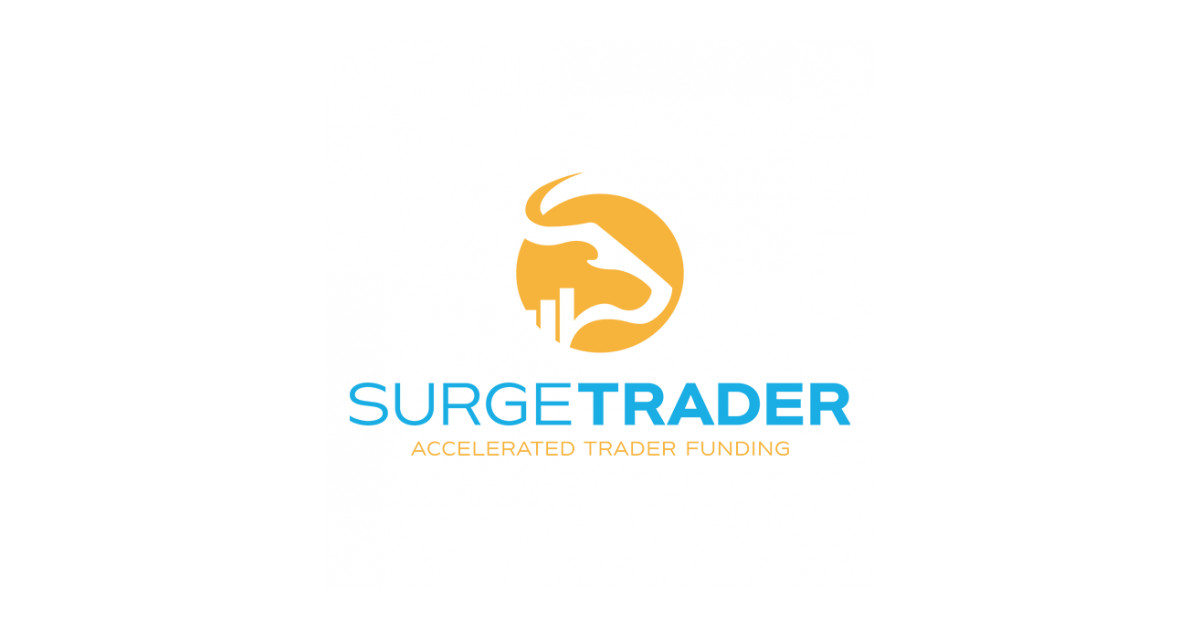
“2022 Best Prop Trading Firm …” from www.newswire.com and used with no modifications.
SurgeTrader has revolutionized the speed-to-funding model with their streamlined one-phase evaluation process. Recognizing that talented traders often abandon lengthy challenge processes, SurgeTrader has condensed qualification into a single, concentrated assessment of risk management capabilities. Their proprietary “Risk Intelligence Score” evaluates traders based on decision quality rather than just profit metrics, creating a more holistic picture of trader potential. This innovative approach has resulted in funding approval rates 40% higher than industry averages while maintaining remarkably low blowout percentages among funded accounts.
The firm’s commitment to rapid progression extends to their account sizing and scaling processes. Successful traders can quadruple their capital allocation within just 60 days through their accelerated milestone program. With same-day funding decisions and account setup, traders can literally go from application to trading funded capital within 24 hours. Their newly implemented mobile verification system also allows traders to complete challenges entirely from smartphones—the first truly mobile-first evaluation experience in the industry.
7. FundedNext: Superior Mobile Trading Experience

“The European Financial Review” from www.europeanfinancialreview.com and used with no modifications.
FundedNext has emerged as the dominant mobile-first prop trading firm of 2026, recognizing the massive shift toward smartphone and tablet trading among the newest generation of traders. Their proprietary mobile platform delivers institutional-grade execution with an intuitive interface designed specifically for touchscreen devices. Advanced features like gesture-based order entry, haptic feedback on trade execution, and voice-activated position management have transformed how traders interact with markets on the go.
The firm’s technological edge extends beyond just platform development to include their AI-powered trade analysis system. This unique tool provides real-time feedback on position sizing, entry timing, and risk management decisions through a combination of visual cues and subtle notifications. Their cross-device synchronization allows seamless transitions between mobile and desktop trading without disruption to strategy execution. For traders seeking true location independence, FundedNext offers unparalleled flexibility without sacrificing trading capabilities.
8. PropTraderPro: Best New Entrant

“Prop Trader Pro – Trading from Scratch …” from m.youtube.com and used with no modifications.
Founded by a team of former institutional traders from top investment banks, the firm brings unprecedented market access to retail traders. Their direct exchange connectivity provides execution speeds previously available only to high-frequency trading firms. This infrastructure advantage translates to measurably better fills, particularly during volatile market conditions when microseconds matter.
What distinguishes PropTraderPro from other new entrants is their hybrid funding model. Rather than requiring full challenge completion before funding, they implement a graduated access approach where traders receive incremental capital increases as they demonstrate proficiency. This reduced initial barrier has proven particularly attractive to talented but undercapitalized traders. Their proprietary risk management console provides institutional-grade position analysis with customizable parameters that grow more flexible as traders establish consistent performance records. For more insights on top trading firms, you can explore the best prop trading firms listed by Benzinga.
9. Apex Trader Funding: Best for US-Based Traders

“Apex Trader Funding 2025 review | Read …” from tradingfinder.com and used with no modifications.
Apex Trader Funding has solidified its position as the premier choice for American traders, with regulatory frameworks specifically tailored to navigate the complex U.S. financial landscape. Their relationships with domestic clearing firms ensure compliance with all applicable regulations while providing the tax documentation American traders need. This regional specialization eliminates the cross-border complications that often plague international prop trading relationships for U.S. citizens.
Beyond regulatory advantages, Apex offers specialized market coverage focused on instruments popular with American traders. Their expanded hours accommodate both traditional market sessions and extended trading, with particular strength in equity index futures and energy markets. Their newly launched Trader Tax Portal simplifies quarterly estimated payments and annual filing requirements, solving one of the most common headaches for profitable traders. For Americans seeking funded accounts without administrative complexities, Apex provides an unmatched domestic solution.
10. True Forex Funds: Most Competitive Fee Structure

“True Forex Funds Spreads Discussed By …” from businesspost.ng and used with no modifications.
True Forex Funds has disrupted the industry with a radically transparent fee model that eliminates hidden costs entirely. While other firms continue to generate substantial revenue from evaluation fees regardless of trader success, TFF has pioneered a predominantly success-based compensation structure. Their evaluation fees are among the lowest in the industry, with the innovative option to have them refunded entirely upon successful funding. This aligned incentive structure ensures the firm profits primarily when their traders succeed, not when they fail.
The firm’s commitment to cost efficiency extends to their ongoing operational model. Unlike competitors who charge monthly account maintenance fees or data subscriptions, TFF includes all necessary tools and resources in their base offering. Their proprietary spread analysis tool continuously monitors execution quality against benchmark rates, ensuring traders receive competitive pricing on all instruments. For cost-conscious traders seeking to maximize their effective profit split, TFF’s transparent economics provide a compelling advantage over traditional fee-heavy models.
How Top Prop Firms Now Evaluate Traders
The evaluation methodologies employed by leading prop firms have undergone a fundamental transformation. The industry has moved decisively away from simplistic profit targets toward multidimensional assessments of trading competence. This shift recognizes that consistent profitability stems from proper risk management and psychological discipline rather than aggressive profit-seeking. Today’s elite prop firms employ sophisticated analytics to identify traders who demonstrate the decision-making patterns associated with long-term success.
The End of Impossible Challenge Models
The days of predatory challenge designs intentionally structured to be nearly impossible to pass have largely disappeared among reputable firms. Market pressure and increased trader awareness have forced transparency, with the best firms now publishing detailed pass rates and performance metrics. The new evaluation standard focuses on identifying genuine trading skill rather than collecting perpetual evaluation fees from failing traders. This industry-wide shift has been driven by successful traders voting with their wallets, abandoning firms with artificially difficult challenges in favor of those with fair assessment parameters.
Today’s evaluation models incorporate dynamic performance metrics that adjust to prevailing market conditions. Rather than imposing rigid profit targets regardless of volatility environments, advanced firms now implement relative performance benchmarks that consider actual market opportunities. This adaptive approach recognizes that trading opportunities fluctuate naturally, and skilled traders demonstrate their edge by capitalizing on conditions when they’re favorable while preserving capital when they’re not.
Focus on Consistency Over Quick Profits
The most significant evolution in trader evaluation has been the prioritization of consistency metrics over absolute return figures. Leading firms now track performance stability through measures like Sharpe ratio, maximum drawdown percentage, and win-rate consistency across different market conditions. This approach identifies traders who can deliver sustainable results rather than those who simply get lucky during evaluation periods. Sophisticated risk-adjusted return calculations have replaced blunt profit targets as the primary qualification metric.
Evaluation periods have generally extended to accommodate this focus on consistency, with most premier firms now requiring 30-60 days of trading data to establish statistical significance. The single-day challenge models popular in previous years have largely disappeared, recognized as insufficient for proper skill assessment. This longer observation window allows patterns to emerge that distinguish skill from randomness, producing funded traders with much higher retention rates and profitability.
Risk Management Metrics That Matter Most
The core metrics that determine evaluation success center primarily around risk management capabilities rather than raw profit generation. Sophisticated prop firms now monitor metrics like average risk-reward ratios, consistency of position sizing relative to account balance, correlation between position size and setup quality, and adaptability to changing volatility conditions. These factors have proven far more predictive of long-term success than simple profit targets ever were.
Risk Management Metrics That Matter Most
Prop firms have shifted their evaluation criteria to prioritize sophisticated risk management over raw profit potential. The most successful firms now track key metrics like maximum drawdown percentage, average risk per trade relative to account size, and the consistency of risk application across different market conditions. These measurements provide a much clearer picture of a trader’s long-term viability than simple profit targets ever could.
Elite prop firms have implemented advanced risk analytics that examine how traders respond to unexpected market movements. Their evaluation algorithms now monitor for risk adaptation during volatile periods, assessing whether traders appropriately reduce position sizes or widen stop parameters. This focus on contextual risk management identifies traders who can navigate changing market environments without blowing up accounts—a critical skill that traditional evaluations often missed.
- Maximum daily loss percentage relative to account size
- Consistency of stop placement relative to market volatility
- Recovery efficiency after drawdown periods
- Risk distribution across correlated asset classes
- Position sizing adjustment based on setup quality
Modern evaluation systems also place significant emphasis on trade exit quality rather than just entry precision. The ability to manage winning trades through appropriate scaling and trailing techniques often separates consistently profitable traders from those who struggle with long-term performance. These nuanced assessments have dramatically improved funded trader retention rates across the industry.
Psychology Assessments: The New Normal
Perhaps the most innovative development in prop firm evaluations is the incorporation of trading psychology metrics. Leading firms now employ behavioral analysis algorithms that identify destructive trading patterns like revenge trading, overtrading during drawdowns, or inconsistent risk application. These psychological markers have proven remarkably predictive of future performance issues, allowing firms to identify potential problems before they manifest in account blowups.
Some forward-thinking prop firms have introduced optional psychological assessments as part of their evaluation process. These scientifically validated tools measure traits like impulse control, risk tolerance, and decision-making under pressure—all critical factors in trading success. Traders who opt into these assessments often receive customized coaching and resources designed to strengthen their psychological weaknesses, creating a developmental partnership between trader and firm.
Funding Models Compared: One-Phase vs. Two-Phase vs. Instant
The prop trading industry has converged around three primary funding models, each with distinct advantages for different trader profiles. Understanding the nuances of one-phase challenges, two-phase evaluations, and instant funding options is essential for choosing the right pathway to funded trading. While costs and requirements vary significantly between these approaches, all have viable paths to profitability for skilled traders.
The one-phase model has gained popularity for its streamlined approach, typically requiring traders to demonstrate consistent performance over a single evaluation period of 30-45 days. This model appeals to experienced traders who prefer a direct path to funding without multiple hurdles. Two-phase evaluations remain common among established firms, providing a progressive assessment that first tests profit potential before focusing on consistency in a second phase.
Instant funding has emerged as a disruptive force in the industry, allowing traders to bypass traditional evaluations entirely in exchange for higher upfront fees. While this model provides immediate access to capital, it typically comes with more restrictive trading parameters and lower initial account sizes. The right funding model depends largely on your experience level, available capital for evaluation fees, and confidence in your trading strategy’s immediate performance.
Cost-Benefit Analysis of Each Model
The financial considerations between funding models extend far beyond the initial evaluation fees. One-phase challenges typically cost between $300-$800 depending on account size, representing a middle ground in upfront investment. These evaluations offer a reasonable balance of accessibility and rigor, though the single phase means traders must demonstrate both profitability and consistency simultaneously.
Two-phase models generally command higher total fees, ranging from $500-$1,200, but distribute the challenge across separate profit and consistency demonstrations. This structured approach creates a clearer roadmap to funding but extends the total time before earning real profits. Many traders find the progressive nature worth the additional cost, particularly when firms offer fee refunds upon successful funding.
Instant funding represents the highest upfront investment at $1,000-$2,500 for comparable account sizes, but eliminates waiting periods entirely. For traders with proven strategies ready for immediate deployment, this premium can quickly pay for itself through faster access to profit splits. The model works best for experienced traders with sufficient capital who can confidently navigate the typically stricter risk parameters imposed on instant-funded accounts.
Success Rates by Funding Type
Industry data from 2026 reveals significant variation in evaluation success rates across funding models. Two-phase evaluations show the highest overall pass rates at 18-22%, with the structured progression allowing traders to adjust between phases. The first phase typically sees 30-35% success, while the second phase completion rate hovers around 60% for those who advance, creating a compounded success pipeline that benefits methodical traders.
One-phase challenges report pass rates of 12-15% on average, reflecting the greater difficulty of simultaneously demonstrating all required trading competencies. The consolidated evaluation period demands consistent performance from day one, creating a higher bar that eliminates traders who might need adjustment periods. This model tends to favor experienced traders with established methodologies rather than developing talent.
Funding Model Success Rates (2026 Industry Average)
Two-Phase Evaluation: 18-22% overall completion
One-Phase Challenge: 12-15% pass rate
Instant Funding: 8-10% retention after 90 days
*Data aggregated from the top 15 prop firms by trading volume
Instant funding shows the lowest long-term success metrics, with only 8-10% of traders maintaining their accounts beyond 90 days. The combination of higher risk parameters and immediate pressure creates a challenging environment that quickly separates skilled traders from those who purchased access without adequate preparation. However, those who succeed in this model typically generate profits faster than in any other funding approach.
Hidden Fees to Watch For
The proprietary trading landscape of 2026 still contains numerous fee traps for unwary traders. Beyond advertised evaluation costs, many firms impose subscription fees, data charges, platform fees, and inactivity penalties that can significantly erode profitability. The most transparent firms now provide complete fee schedules that outline all potential charges before traders commit to evaluations.
For those interested in exploring related trends, the best 2026 dropshipping trends offer insights into other evolving business models.
Particularly concerning are the scaling fees that some firms apply when traders request account size increases. These can range from reasonable administrative charges to substantial “upgrade fees” that effectively function as additional evaluations. Before committing to any prop firm, carefully review their fee structure for account growth to ensure your success won’t be punished with excessive charges for scaling up.
Profit Splits and Payout Structures That Favor Traders
The competitive landscape of 2026 has forced prop firms to offer increasingly favorable profit-sharing arrangements to attract and retain top trading talent. While 80% trader splits were once considered generous, the industry standard has shifted dramatically toward 90%+ arrangements for most established firms. This evolution reflects both increased competition and recognition that higher splits ultimately benefit firms through improved trader retention.
Beyond the headline percentage, payout structures vary significantly in frequency, thresholds, and withdrawal processes. The most trader-friendly firms now offer weekly payment options with minimal threshold requirements, often as low as $100 for established accounts. This rapid access to profits provides critical cash flow for professional traders while demonstrating the firm’s financial stability.
For those interested in exploring diverse trading opportunities, understanding the differences between crypto vs forex trading can offer valuable insights into the best investment strategies.
The most innovative development in profit sharing has been the introduction of progressive split models that increase the trader’s percentage based on consistency and longevity. These loyalty-based structures can reach as high as 95% for traders who maintain profitable performance over extended periods, creating strong incentives for long-term partnerships rather than firm-hopping for marginal advantages.
For traders considering different investment strategies, comparing crypto vs forex trading can offer insights into the best approaches for sustainable success.
The New Standard: 80%+ Profit Splits
The baseline profit split for reputable prop firms has settled at a minimum of 80% for traders, with many firms offering 85-90% as their standard arrangement. This dramatic increase from earlier industry norms reflects intense competition for skilled traders who now have unprecedented options for funded accounts. Even entry-level programs from premier firms now start at 80%, with clear pathways to higher percentages through performance milestones.
What’s particularly notable is that these improved splits haven’t come with additional hidden fees or restrictions. The genuine net improvement in trader economics demonstrates the industry’s evolution toward sustainable partnerships rather than extraction-based business models. For traders evaluating potential firms, anything below 80% should immediately raise questions about the firm’s competitiveness and value proposition in today’s market.
Weekly vs. Monthly Payout Options
Payout frequency has emerged as a critical differentiator among top prop firms, with weekly withdrawals becoming increasingly common for established traders. This acceleration from the traditional monthly schedule provides significant cash flow advantages for full-time traders who rely on consistent income. The most trader-friendly firms now process weekly payment requests within 24-48 hours, with some offering premium same-day options for verified traders.
Monthly structures remain common among firms with lower capital reserves, typically processing payments between the 1st and 5th of each month for the previous period’s profits. While less convenient than weekly options, these arrangements often come with lower minimum thresholds, sometimes allowing withdrawals as small as $50-$100. For part-time traders or those building smaller accounts, this trade-off between frequency and minimum size may actually prove advantageous.
If you’re interested in understanding the broader financial landscape, explore our guide on crypto vs. forex trading for more insights.
Scaling Programs: How They Actually Work
The most sophisticated prop firms have developed nuanced scaling programs that increase account sizes based on demonstrated performance metrics rather than arbitrary targets. These modern scaling systems typically follow a 3-tier structure that evaluates profit consistency, drawdown management, and risk-adjusted returns over trailing periods of 30, 60, and 90 days. Traders meeting these criteria can often double their capital allocation every 90 days up to predetermined maximums, creating exponential growth potential for consistently profitable strategies.
Transparency in scaling requirements has improved dramatically, with leading firms now providing detailed progression roadmaps from day one. The most trader-friendly programs implement automatic reviews at regular intervals, proactively identifying qualifying traders rather than requiring them to request evaluations. This systematic approach eliminates the uncertainty and subjective assessments that previously plagued scaling programs, creating clear pathways for account growth.
The ultimate expression of scaling sophistication comes from firms offering multi-account management for their most successful traders. These programs allow proven performers to simultaneously manage multiple funded accounts with different risk parameters, creating portfolio diversification across strategies and instruments. For traders with robust methodologies, this approach can multiply effective capital far beyond single-account limits.
If you’re interested in exploring more about investment strategies, check out this comprehensive guide on crypto vs. forex trading.
- Baseline scaling: Double capital every 90 days based on risk-adjusted performance
- Accelerated paths for exceptional traders showing minimal drawdowns
- Parallel account options for strategy diversification
- Guaranteed review periods with transparent qualification metrics
- Maintenance requirements that prevent unwarranted account reductions
Tax Implications by Region
The tax treatment of prop trading profits varies dramatically by jurisdiction, creating important considerations for traders selecting firms. In most regions, payments from prop firms are classified as self-employment income rather than investment returns, subjecting them to higher tax rates and additional self-employment taxes in many countries. This classification means profits typically don’t receive the preferential capital gains treatment that personal trading accounts might enjoy.
The most trader-friendly firms now provide comprehensive tax documentation tailored to major jurisdictions, including 1099 forms for US traders and equivalent reporting for EU, UK, Australian, and Canadian participants. Some advanced firms have established tax-optimized payment structures for high-volume traders, including corporate payment options that may provide advantages depending on individual circumstances. As always, consultation with a tax professional familiar with trading activities remains essential for optimizing your specific situation.
Specialized Prop Firms Worth Considering
While our top 10 rankings cover the best overall prop trading firms, several specialized providers excel in serving particular market niches or trader categories. These focused firms often provide deeper expertise, better execution, and more relevant features for traders concentrating on specific instruments or strategies. For traders with clearly defined specializations, these tailored options can offer significant advantages over general-purpose firms.
Best Crypto-Focused Prop Firms
The cryptocurrency trading landscape has matured significantly by 2026, with specialized prop firms now offering institutional-grade access to digital asset markets. These crypto-native firms provide advantages including 24/7 trading capabilities, spot and derivatives access across multiple exchanges, and profit splits denominated in either stablecoins or fiat currencies according to trader preference. Their specialized risk management systems accommodate the unique volatility characteristics of cryptocurrency markets, with appropriate adjustments to drawdown parameters and position sizing guidelines.
Leading crypto prop firms have developed proprietary cross-exchange execution systems that minimize slippage and maximize liquidity access across fragmented markets. These technological advantages allow funded traders to execute complex strategies involving spot-futures arbitrage, cross-exchange opportunities, and liquidity-based executions that would be impossible on retail platforms. For serious cryptocurrency traders, these specialized firms offer toolsets and capital structures optimized specifically for digital asset dynamics.
Options and Stocks Trading Specialists
The equity options space has seen tremendous growth in specialized prop firms catering to derivatives traders. These firms provide comprehensive options chains, advanced Greeks analytics, volatility surface modeling, and complex position management tools rarely found in general-purpose prop platforms. Their risk management systems are specifically calibrated for options strategies, accounting for non-linear risk profiles and complex hedge relationships that generalist firms often misunderstand.
For pure stock traders, specialized equity prop firms offer advantages including extended hours access, direct market routing options, comprehensive level 2 data, and dark pool visibility. These firms typically maintain relationships with multiple prime brokers, providing superior borrowing capabilities for short strategies and access to hard-to-borrow securities. Their commission structures are typically optimized for equity trading patterns, with reduced costs for higher share counts and specialized pricing for high-frequency strategies.
For more insights, you can explore the best prop trading firms and their offerings.
Forex-Only Powerhouses
Despite the industry trend toward multi-asset offerings, several elite prop firms maintain a laser focus on forex trading excellence. These currency specialists provide institutional-grade liquidity access, microsecond execution capabilities, and sophisticated correlation analytics specifically designed for FX relationship trading. Their specialized risk management frameworks account for currency correlations, allowing more nuanced position sizing across related pairs than generalist platforms typically permit.
The best forex-focused firms offer comprehensive coverage beyond major pairs, including access to exotic currencies, metals, and related instruments with institutional pricing. Their funding models typically accommodate the lower volatility of major forex pairs through adjusted profit targets and extended evaluation periods. For dedicated currency traders, these specialized firms provide execution advantages and market insights that multi-asset platforms rarely match.
Firms for Algorithmic Traders
The algorithmic trading segment has seen remarkable innovation from specialized prop firms catering to systematic traders. These tech-forward companies provide direct API access, virtual private servers with exchange co-location, comprehensive historical data sets, and sophisticated backtesting environments. Their evaluation processes are specifically designed to assess algorithmic performance, with extended testing periods that can properly measure system robustness across varied market conditions.
For traders interested in exploring different trading avenues, understanding the best investment strategies can be beneficial.
The most advanced algo-focused firms now offer proprietary strategy development environments, allowing traders to build, test, and deploy systematic approaches within secure infrastructures. These platforms typically include machine learning capabilities, factor modeling tools, and optimization frameworks that would otherwise require significant development resources. For quantitative traders, these specialized environments provide both technological infrastructure and capital access in a seamless package.
Red Flags and Warning Signs in Modern Prop Firms
Despite industry maturation, the prop trading landscape still contains numerous hazards for unwary traders. Learning to identify red flags can save you thousands in wasted evaluation fees and countless hours of frustration. The most dangerous firms typically display multiple warning signs, from unrealistic promises to opaque business practices designed to extract maximum fees while minimizing actual funding.
The Truth About “No Rules” Trading Accounts
The “no rules” or “trade your way” marketing pitch has become one of the most deceptive tactics in the prop firm industry. While flexibility is valuable, legitimate firms must implement some form of risk parameters to protect their capital. Firms advertising completely unrestricted trading invariably impose hidden limitations that only become apparent after evaluation fees are paid, or they operate unsustainable models designed to collect fees without genuine funding intentions.
Legitimate flexibility comes through reasonable, transparent parameters that accommodate different trading styles rather than the absence of rules entirely. The best firms clearly document their risk guidelines from the outset, providing specific metrics for maximum daily losses, position sizing relative to account balance, and holding period limitations if applicable. These transparent boundaries create a realistic trading environment while still protecting the firm’s capital base.
- Claims of unlimited holding periods with no overnight restrictions
- Promises of no maximum loss limits or position size constraints
- Marketing that emphasizes complete trading freedom without risk management
- Absence of clearly documented trading parameters before payment
- Vague references to “common sense trading” without specific guidelines
When evaluating “flexible” prop firms, look for those that provide detailed documentation of their specific parameters, reasonable accommodations for different timeframes, and transparent processes for requesting exceptions when strategies require them. The healthiest relationships between traders and firms involve clear, mutually understood boundaries rather than misleading promises of unlimited freedom.
Delayed Payout Tactics to Avoid
Payment reliability remains the ultimate test of prop firm legitimacy, with several problematic patterns emerging among less reputable operators. The most common red flag involves progressively extending payout timeframes as trader profits increase, with processing times mysteriously lengthening when withdrawals reach significant amounts. This tactic aims to frustrate profitable traders into abandoning their earnings or continuing to trade until inevitable losses occur.
If you’re new to trading, it’s essential to understand how to start crypto trading as a beginner to avoid such pitfalls.
Other concerning practices include implementing surprise “compliance reviews” before processing larger withdrawals, suddenly requiring additional identity verification not mentioned in original agreements, or imposing new minimum trading requirements before releasing funds. These artificial barriers typically appear only when traders request significant withdrawals, revealing the firm’s true intention to avoid paying legitimate profits. Reputable firms maintain consistent, transparent withdrawal processes regardless of profit amount, with clearly documented timelines adhered to for all traders.
Unrealistic Scaling Promises
Exaggerated scaling opportunities have become a primary marketing tactic for questionable prop firms. While legitimate scaling programs exist, promises of exponential account growth without corresponding performance requirements should immediately raise suspicion. The most deceptive firms advertise pathways from small evaluations to million-dollar accounts within unrealistically compressed timeframes, creating false expectations that keep traders paying for progressively larger challenges.
Legitimate scaling programs include specific, measurable performance criteria tied to risk-adjusted returns rather than simple profit targets. They typically require demonstrated consistency across multiple time periods, appropriate drawdown management, and sustainable risk metrics—not just hitting arbitrary profit numbers. These programs also provide detailed statistics on how many traders actually achieve each scaling level, creating realistic expectations rather than selling false dreams.
The most predatory firms implement constantly moving qualification targets for scaling, creating perpetual “almost there” situations where traders continuously fall just short of requirements. This psychological tactic keeps traders engaged and paying fees while ensuring very few actually receive increased capital allocations. Before committing to any firm with aggressive scaling marketing, request specific data on scaling success rates and the percentage of evaluation traders who ultimately reach advanced capital tiers.
- Promises of 10x capital increases within unrealistically short timeframes
- Absence of clear, objective qualification metrics for each scaling level
- No published data on scaling success rates or average progression timelines
- Requirements that change or increase after initial evaluation completion
- Excessive fees for account size increases that approach or exceed new evaluation costs
Transparency Issues in Trading Metrics
The most concerning prop firms obscure or manipulate the fundamental trading metrics that determine evaluation success or failure. These deceptive practices include unclear calculation methodologies for drawdown measurements, ambiguous definitions of trading days, and floating profit targets that seemingly adjust to keep traders just short of qualification. When firms refuse to provide explicit, consistent definitions of how performance is measured, they create environments where traders can never be certain of their standing.
Legitimate firms provide comprehensive, transparent documentation of exactly how each performance metric is calculated, measured, and applied. They offer real-time dashboards showing current account status relative to all requirements, with clear indicators of remaining objectives. This transparency creates an environment where traders can focus on execution rather than constantly questioning whether they’re meeting mysterious, shifting standards designed to extract maximum fees.
How to Choose the Right Prop Firm for Your Trading Style
Selecting the optimal prop trading firm requires honest self-assessment of your trading methodology, strengths, weaknesses, and objectives. The ideal firm for a scalper trading currency pairs differs dramatically from the best choice for a swing trader focusing on equity options. By methodically evaluating your specific needs against each firm’s offerings, you can identify partnerships that complement your approach rather than forcing adaptation to incompatible structures.
Begin by documenting your typical holding periods, preferred instruments, average trade frequency, and risk management approach. These core elements of your trading style will immediately eliminate firms with incompatible restrictions or inadequate market access. Next, consider your capital situation—firms requiring larger evaluation fees may offer better terms but present higher initial barriers. Finally, evaluate technological requirements including platform compatibility, execution speed needs, and any specialized tools essential to your methodology.
The most successful trader-firm relationships develop when trading styles align naturally with the firm’s structural advantages. Rather than forcing your methodology to fit arbitrary restrictions, seek firms specifically designed to accommodate your approach. This alignment creates sustainable partnerships where both trader and firm benefit from consistent performance rather than adversarial relationships built on conflicting incentives.
Day Traders vs. Swing Traders: Different Needs
Day traders require fundamentally different prop firm structures than position traders, with execution speed, intraday margin requirements, and platform stability taking precedence over holding period flexibility. The optimal day trading prop firm provides low-latency market access, competitive intraday margin rates, and comprehensive level 2 data across all traded instruments. Commission structures should favor high-frequency approaches, with potential rebates for volume that reduce effective trading costs.
For day traders, evaluation metrics should focus on intraday risk management rather than absolute profit targets, with parameters that accommodate multiple daily positions while preventing excessive risk concentration. Platform stability becomes particularly critical, as even brief outages during active sessions can result in significant losses. Leading day trading firms now provide status dashboards showing system health across all components, along with documented failover procedures for technical disruptions.
Swing traders prioritize holding period flexibility, overnight margin capabilities, and comprehensive fundamental data resources rather than millisecond execution advantages. The ideal swing trading prop firm allows multi-day positions with reasonable overnight requirements, provides robust fundamental screening tools, and offers news integration directly within trading platforms. Evaluation parameters should accommodate natural drawdown patterns in longer-term approaches while focusing on overall risk-adjusted returns rather than daily fluctuations.
Account Size Considerations
Selecting appropriate account size requires balancing evaluation costs against realistic profit potential based on your methodology and experience level. Beginning with excessively large accounts often leads to psychological pressure and overtrading, while undersized accounts may restrict proper position sizing for your strategy. Most traders should start with accounts between $25,000 and $100,000, representing sufficient capital to execute their methodology while minimizing evaluation costs.
Calculate your typical position size requirements based on average risk per trade and instrument volatility, then ensure the selected account size accommodates at least 20-30 such positions without breaching risk parameters. This approach provides sufficient flexibility for normal trading patterns while preventing excessive concentration in individual positions. Consider starting at the lower end of your viable range, as successful trading typically qualifies for scaling to larger accounts while failed evaluations require complete restarts.
Platform Compatibility Assessment
Platform compatibility remains one of the most overlooked aspects of prop firm selection, yet trading through unfamiliar or incompatible interfaces can severely impact performance. Before committing to any evaluation, thoroughly test the firm’s supported platforms through demo accounts, ensuring all essential features from your methodology are fully supported. Pay particular attention to order types, charting capabilities, indicator availability, and hotkey functionality critical to your execution process.
For those new to trading, understanding how to start crypto trading can also be beneficial in evaluating platform compatibility.
Support Quality: What to Test Before Committing
The quality of trader support becomes crucial during moments of platform issues, rule clarifications, or payout processing. Before committing to any prop firm, thoroughly test their support responsiveness through pre-sales inquiries about specific trading scenarios relevant to your approach. The most reliable firms provide multi-channel support with clearly documented response time guarantees, including emergency protocols for trading platform issues during market hours.
Support Quality Checklist
1. Response time to pre-sales technical questions
2. Availability of live chat during trading hours
3. Emergency contact options for platform issues
4. Knowledge depth of support staff on trading rules
5. Escalation procedures for complex situations
Pay particular attention to the technical depth displayed in responses, as this indicates whether support personnel possess genuine trading knowledge or simply follow basic scripts. The best firms employ actual traders in support roles who can address nuanced questions about rule applications in specific scenarios. This expertise becomes invaluable when navigating edge cases that inevitably arise during funded trading.
Consider testing support during off-peak hours and high-volume market periods to assess consistency across different conditions. Firms that maintain response standards regardless of market volatility demonstrate the robust infrastructure necessary for supporting funded traders through all market environments. This reliability indicates organizational maturity and proper resource allocation rather than understaffed operations that collapse under pressure.
Finally, request sample documentation for common processes like withdrawal requests, account scaling applications, or trading rule clarifications. Transparent, comprehensive documentation reflects organized operations designed for trader success rather than intentionally opaque procedures that frustrate profitable traders.
The Path Forward: What Successful Funded Traders Do Differently
The traders who achieve sustained success with prop firms share several distinctive approaches that separate them from the overwhelming majority who fail to maintain funded accounts. Their methodologies prioritize consistency and risk management over aggressive profit targets, with disciplined execution of well-defined trading plans rather than opportunistic or emotional decision-making. This methodical approach creates the stability that prop firms ultimately value more than occasional spectacular gains.
Successful funded traders treat their relationship with prop firms as legitimate business partnerships rather than adversarial contests. They understand that sustainable success comes through alignment with the firm’s risk parameters and business model, not by attempting to extract maximum capital in minimum time. This professional mindset extends to detailed record-keeping, performance analysis, and continuous methodology refinement—creating accountability structures more commonly found in institutional environments than retail trading approaches.
Frequently Asked Questions
As the prop trading industry continues evolving, traders naturally have questions about how these changes affect their opportunities and obligations. The following responses address the most common inquiries we receive from traders evaluating funded account options.
How much capital do I need to start with a prop trading firm?
The minimum capital required to begin with reputable prop firms ranges from $200-$500 for evaluation fees on smaller accounts, with most traders starting on $25,000-$50,000 funded accounts after successful challenges. While some firms offer evaluations for as little as $100, these typically provide such small funded accounts ($5,000-$10,000) that profit potential remains limited even with high percentage splits. For sustainable income potential, budget $300-$700 for evaluation fees on accounts large enough to generate meaningful returns with your trading methodology. For more information on choosing the right firm, you can check out Benzinga’s guide on the best prop trading firms.
Beyond evaluation fees, maintain sufficient personal capital to support living expenses during your evaluation period and initial funded trading. The most common mistake new prop traders make is creating excessive financial pressure that forces overtrading or risk violations. Ideally, have 3-6 months of expenses secured before beginning serious prop trading pursuits, allowing you to focus on methodical execution rather than desperate profit generation.
Can I trade crypto, stocks, and forex with the same prop firm account?
Multi-asset trading capabilities have become increasingly common among top prop firms, with about 60% of our recommended providers now offering trading across forex, futures, stocks, and cryptocurrencies from unified accounts. These integrated offerings typically provide consistent risk parameters across asset classes, with appropriate adjustments for instrument volatility and liquidity characteristics. For traders with diverse strategies, these multi-asset accounts eliminate the need to maintain separate funded relationships for different market segments.
What happens if I have a funded account and the prop firm goes bankrupt?
Prop Firm Bankruptcy Protection Comparison
Tier 1 Firms: Segregated trader profit accounts with legal protection
Tier 2 Firms: Regular profit disbursement minimizing exposure
Tier 3 Firms: No formal protection beyond standard creditor claims
*Based on legal structure and jurisdictional regulations
The financial security of your earned but unpaid profits depends entirely on the prop firm’s legal structure and jurisdictional regulations. The most established firms now maintain segregated accounts for trader profits, creating legal separation from operational capital that protects earned funds in bankruptcy scenarios. These segregated structures typically receive priority in liquidation processes, though specific protections vary significantly by jurisdiction.
For those interested in trading, understanding the differences between crypto vs forex trading can also be beneficial.
To minimize exposure to firm insolvency, prioritize providers with weekly payout options and prompt processing timeframes. This approach ensures your capital at risk never accumulates beyond a few days of trading profits. Additionally, research the firm’s corporate structure, jurisdiction, and regulatory status—entities operating under financial service regulations typically provide stronger creditor protections than unregulated corporate structures.
The prop trading industry’s maturation has prompted many leading firms to obtain various forms of insurance or bonding that specifically protects trader capital. Before committing to any firm, inquire about such protections and request documentation of their specific coverage parameters. While no protection scheme is perfect, these additional safeguards indicate serious commitment to business sustainability.
Are prop trading profits taxed differently than personal trading profits?
In most jurisdictions, prop trading income receives less favorable tax treatment than personal investment profits. While personal trading often qualifies for preferential capital gains rates (typically 15-20% in the US and similar in many countries), prop trading payments are generally classified as self-employment or independent contractor income subject to ordinary income rates plus self-employment taxes. This classification can result in total tax burdens 15-25% higher than equivalent profits from personal accounts.
Some traders mitigate this tax disadvantage through business structures like LLCs, S-corporations, or their international equivalents, potentially converting some income to more favorably taxed distributions rather than direct compensation. The viability of these approaches varies dramatically by jurisdiction and individual circumstances, making consultation with a tax professional specializing in trading businesses essential before implementing any tax strategy.
How long does it typically take to pass a prop firm evaluation?
Evaluation timeframes vary significantly based on challenge structure, trading style, and market conditions. Two-phase evaluations typically require 30-60 days total for completion, with each phase averaging 15-30 days depending on profit targets and trading frequency. One-phase challenges can be completed more quickly, with aggressive traders sometimes reaching targets within 10-15 days, though the average successful completion still requires 20-25 days of consistent trading.
The trend toward consistency-focused evaluations has generally extended typical completion timeframes compared to previous years. Modern evaluations emphasizing risk-adjusted returns and drawdown control often require fuller demonstration periods even when profit targets are reached early. This shift benefits methodical traders who maintain consistent processes rather than those seeking to quickly hit targets through excessive risk.
For planning purposes, most traders should anticipate 30-45 days from evaluation purchase to funded account access, accounting for both trading time and administrative processing between phases and after completion. This realistic timeline allows proper methodical execution rather than rushing toward targets with excessive risk—the primary reason most evaluations ultimately fail.
When selecting between prop firms with similar offerings, investigate average completion times for successful traders using approaches similar to yours. Firms with unusually low completion percentages or extended average timeframes may have implemented subtle barriers designed to minimize successful funding, regardless of their advertised parameters.
Funded Trading Plus offers revolutionary instant funding options that eliminate traditional evaluation phases entirely, getting skilled traders directly into funded accounts with their innovative risk assessment technology. For experienced traders seeking immediate market access without lengthy challenges, their streamlined approach provides the fastest path to profit-sharing opportunities in the industry.

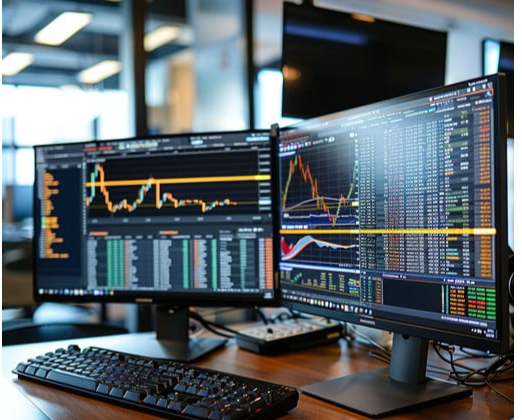
Join the Conversation